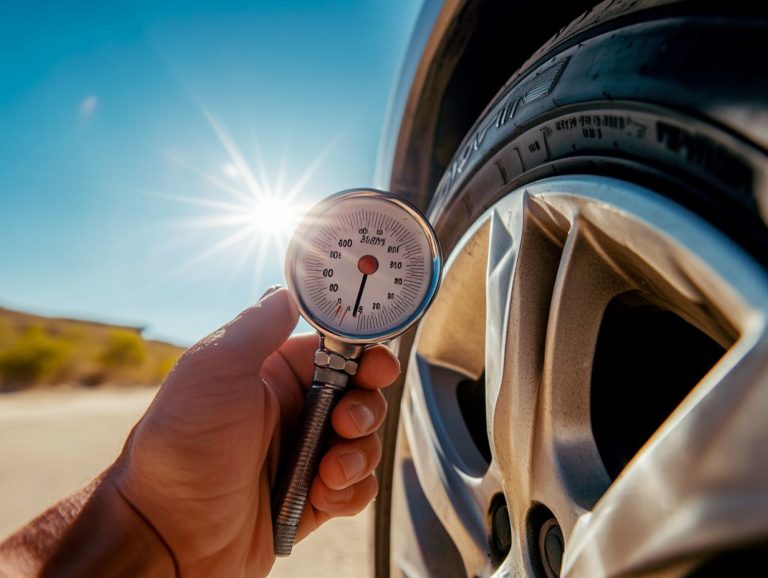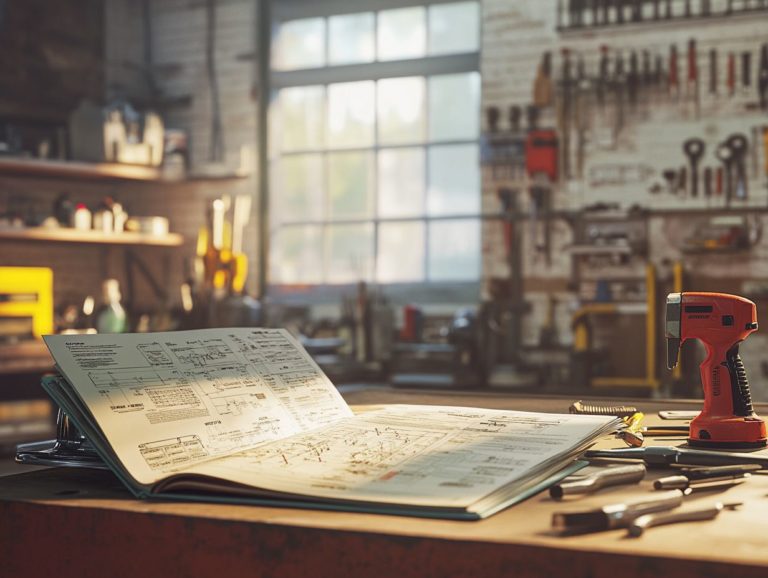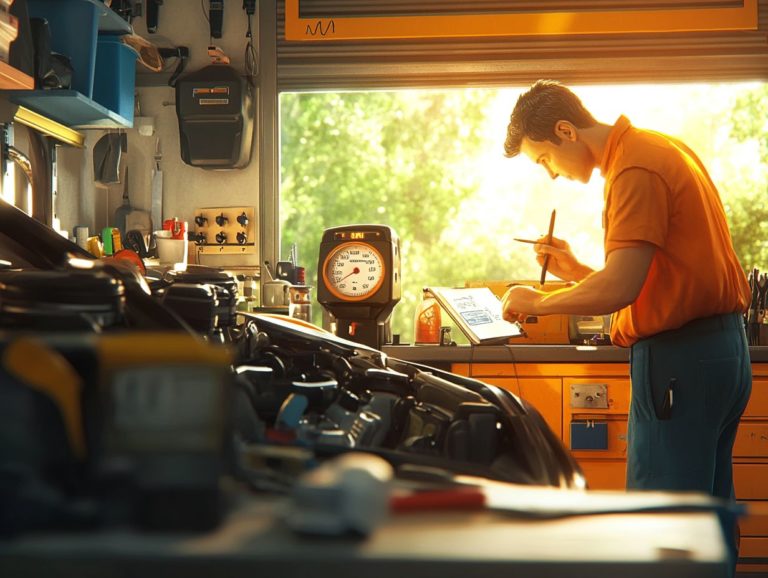How to Diagnose Common Car Problems
Learn to diagnose car problems and take control of your vehicle! Recognizing symptoms early can save you time, money, and a considerable amount of frustration.
This article explores common car issues and their unmistakable signs. It provides you with valuable diagnostic tools, such as tools that help diagnose vehicle problems. You ll also find preventive maintenance tips to keep your car running at its best.
Contents
- Key Takeaways:
- Common Car Problems and Their Symptoms
- Diagnostic Tools and Techniques
- DIY vs Professional Diagnostics: Which is Best for Your Car?
- Preventive Maintenance for Avoiding Car Problems
- Frequently Asked Questions
- 1. How can I diagnose a common car problem?
- 2. What are some common car problems that can be diagnosed without a mechanic?
- 3. Can I use my smartphone to diagnose common car problems?
- 4. How can I tell if my car’s battery is the source of a problem?
- 5. What are some common symptoms of a faulty alternator?
- 6. Can I diagnose a problem with my car’s air conditioning system on my own?
Key Takeaways:
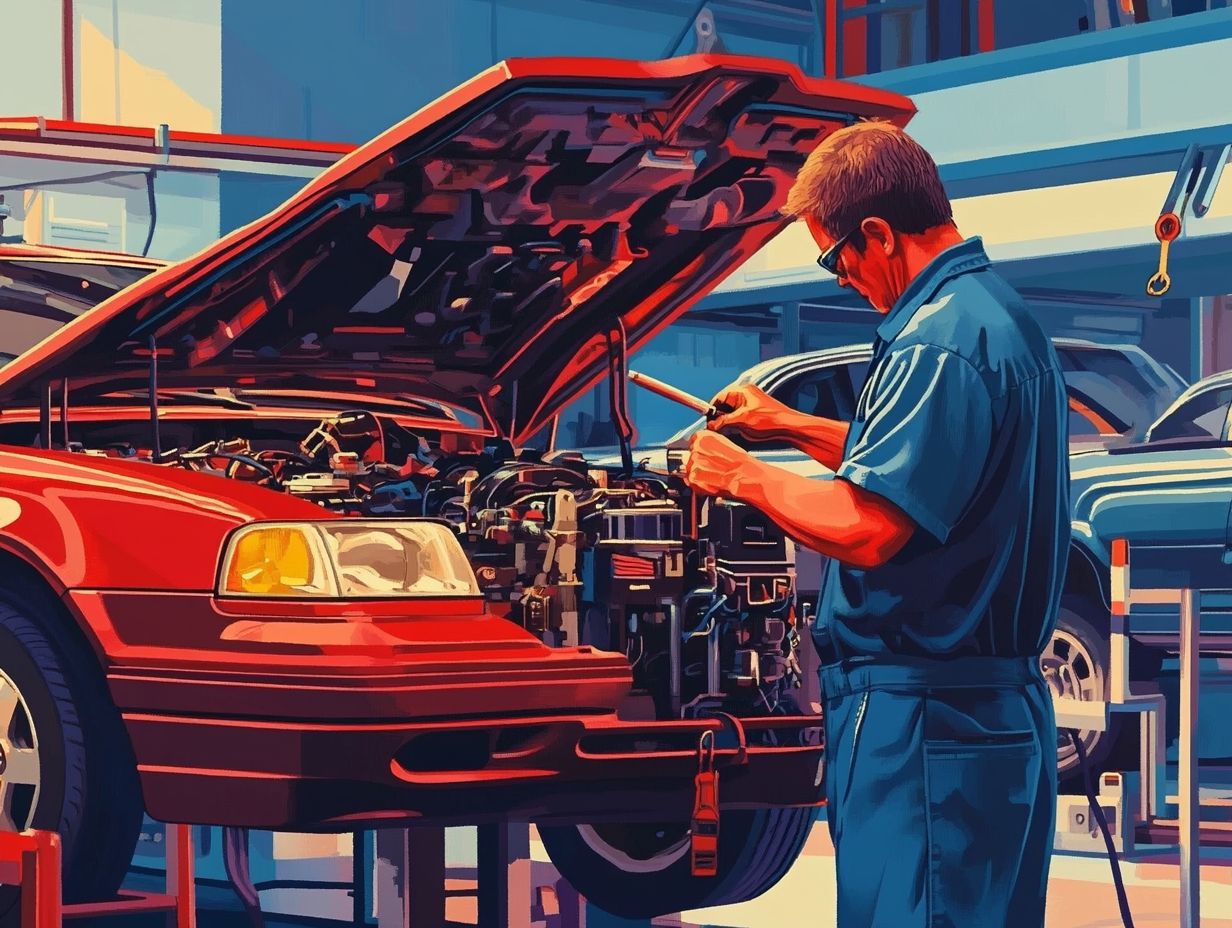
- Regular diagnostic checks can prevent costly repairs.
- Recognize common car problems early to save money.
- Know when to use tools and when to call a professional.
Why Diagnosing Car Problems is Important
Diagnosing car problems is key for ensuring your vehicle’s performance and reliability. Knowing how to identify common car issues early helps you spot underlying problems before they turn into serious headaches.
Regular checks like monitoring your dashboard for warning lights can prevent costly repairs and enhance safety for you and your passengers.
Ignoring symptoms, such as unusual noises or fluid puddles, can lead to significant damage and reduced fuel economy. Act quickly to diagnose issues before they turn into costly repairs!
A blinking check engine light often signals a serious issue that could compromise engine performance. Strange sounds like grinding or squeaking may indicate problems with your brakes or transmission. Detecting fluid leaks early can save you from catastrophic failures.
By prioritizing diagnosis and addressing these red flags promptly, you extend your vehicle’s lifespan and enhance your safety on the road. Paying attention to these indicators fosters better maintenance habits, leading to smoother rides and greater peace of mind.
Common Car Problems and Their Symptoms
Understanding common car problems and their symptoms is crucial for any vehicle owner. For instance, knowing how to diagnose and solve car starting problems can save you time and money while ensuring your safety.
Symptoms like warning lights on your dashboard, unusual noises like clunking or banging, and visible leaks signal underlying issues requiring immediate attention. Stay vigilant to tackle problems before they escalate, ensuring your vehicle s optimal performance and reliability.
Identifying and Addressing Common Issues
Identifying and addressing common car issues requires a solid understanding of your vehicle’s components and the symptoms that signal trouble, like coolant leaks or malfunctioning spark plugs.
Regular maintenance and timely repairs are essential for keeping your car running smoothly. Recognizing issues early prevents further damage and enhances your vehicle’s longevity.
Common problems, such as worn-out brake pads or a dead battery, often present clear indicators like squeaking noises or difficulty starting. These symptoms may hint at underlying issues that could lead to serious complications if not addressed.
Engaging in preventative maintenance through regular check-ups allows you to catch potential faults before they escalate, safeguarding your vehicle’s performance and reliability. Mechanics emphasize the importance of oil changes and fluid checks, critical for minimizing wear and tear on essential components.
Diagnostic Tools and Techniques
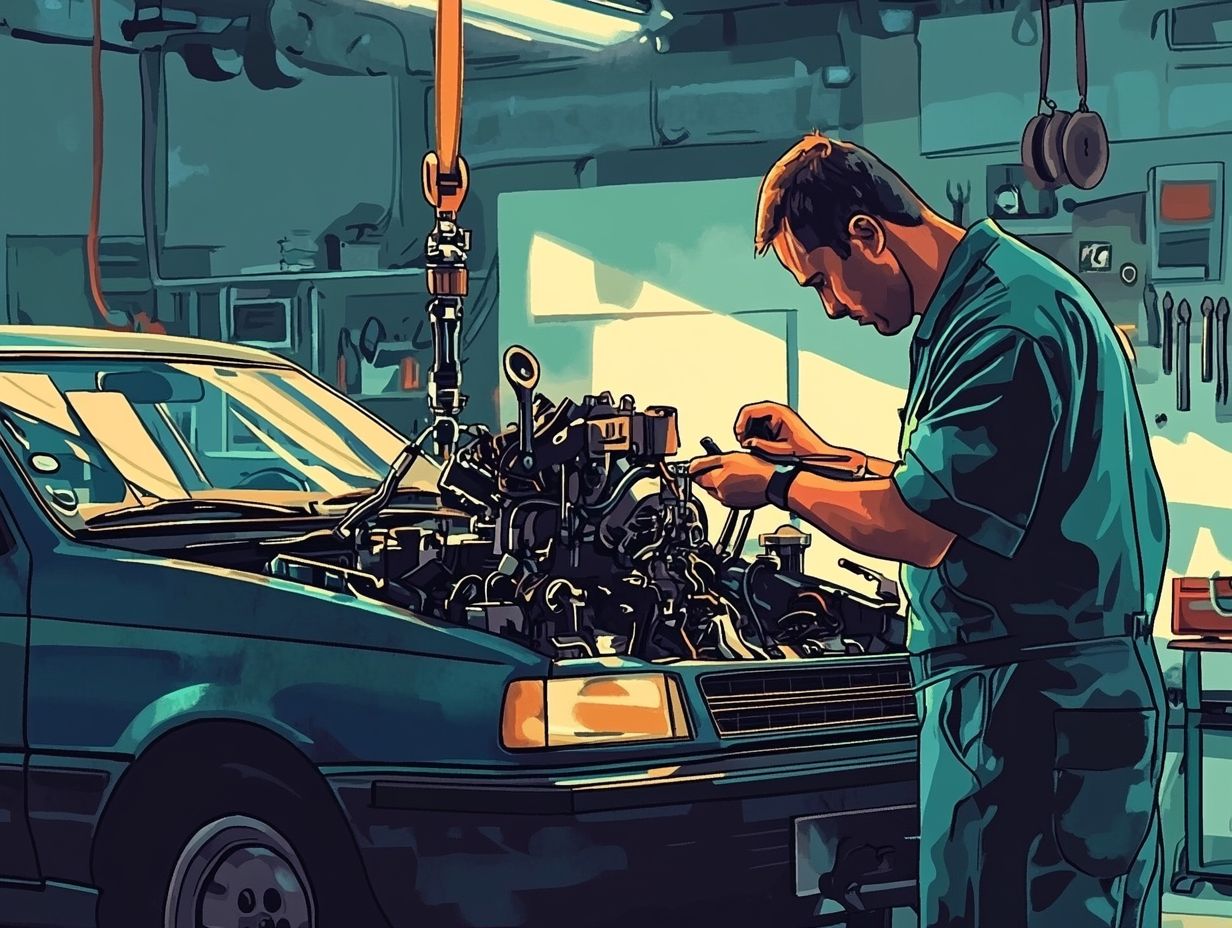
Utilizing diagnostic tools and techniques is crucial for accurately identifying car problems, enhancing performance, and ensuring reliable operation.
OBD-II scanners, or On-Board Diagnostics, version 2, are essential devices for both professional mechanics and dedicated DIY enthusiasts like yourself. They enable a thorough inspection of your vehicle s systems and allow you to retrieve error codes.
These tools streamline the troubleshooting process and play a significant role in maintaining optimal vehicle performance while ensuring meeting safety standards.
Using OBD-II Scanners and Other Tools
Using OBD-II scanners and other diagnostic tools has completely transformed how you identify and resolve car issues. With these devices in hand, both mechanics and car owners can tap into essential data about their vehicles.
When you connect these scanners to your vehicle’s onboard computer, they provide valuable insights into various systems. This helps you troubleshoot everything from warning lights to performance quirks. This technology not only saves you time during repairs but also boosts your car’s reliability by ensuring that all components are operating as they should.
These scanners do more than just read error codes; they monitor real-time data such as engine temperature, fuel efficiency, and oxygen sensor performance. This makes them invaluable for preventive maintenance.
Whether you’re a professional or a DIY enthusiast, having access to these insights allows for a more precise evaluation of your vehicle s health.
Features such as immediate feedback, compatibility with a range of car models, and the ability to perform smog checks make OBD-II scanners essential in today s automotive landscape.
As technology advances, these diagnostics also present opportunities for software updates and customization options, ushering in a new era of vehicle care.
DIY vs Professional Diagnostics: Which is Best for Your Car?
When diagnosing car problems, you often find yourself at a crossroads: should you tackle the issue with do-it-yourself (DIY) methods or consult certified mechanics for professional diagnostics?
Opting for DIY diagnostics can be a cost-effective choice, giving you a deeper understanding of your vehicle. However, it s important to recognize that you might not have access to the specialized expertise and advanced tools that professionals bring to the table.
On the flip side, seeking professional diagnostics ensures a comprehensive inspection and precise repair recommendations. This effectively addresses complex issues to maintain your vehicle’s performance and safety.
Pros and Cons of Each Approach
Evaluating the pros and cons of DIY versus professional diagnostics for car maintenance is essential for making informed decisions about your vehicle’s care.
When you choose DIY diagnostics, you often enjoy substantial cost savings by bypassing labor fees. This flexibility allows you to tackle minor issues on your own schedule and tailor repairs to fit your life.
However, lacking specialized knowledge can lead to oversights or incorrect assessments. This may result in further damage or unexpected expenses down the line.
Conversely, opting for professional services provides a level of accuracy and thoroughness that can be invaluable. Trained mechanics bring the necessary skills and tools to effectively diagnose and resolve issues.
While these services may come with a higher upfront cost, the long-term benefits of reliable repairs and the peace of mind they offer should not be underestimated.
By weighing these options, you can confidently choose the best approach for your vehicle’s health.
Ready to dive deeper into car diagnostics? Let s get started on the right path for your vehicle!
Preventive Maintenance for Avoiding Car Problems
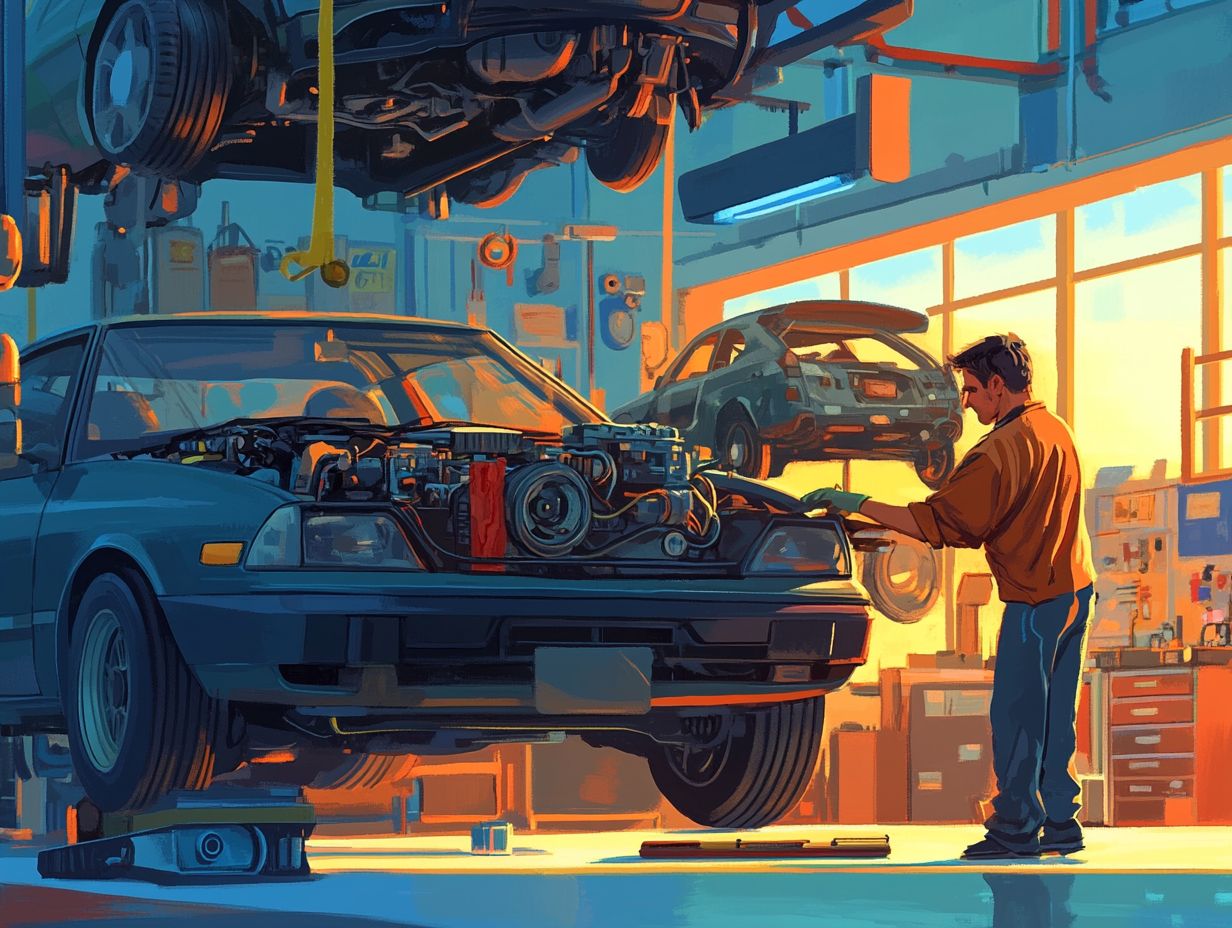
Preventive maintenance is crucial for avoiding car troubles and ensuring long-term performance and reliability. It includes regular checks and services that keep your vehicle in peak condition.
You should regularly monitor and replace fluids, inspect your tires for proper pressure, and promptly address any warning lights that pop up on the dashboard.
Investing in these preventive measures can save money on repairs and significantly extend the lifespan of your vehicle.
Tips for Keeping Your Car in Good Condition
Keeping your car in top shape requires a proactive approach to maintenance. Simple practices, like checking tire pressure and monitoring fluid levels, can save you serious headaches down the road.
Regular fluid checks engine oil, brake fluid, and coolant are vital for preventing overheating and mechanical failures. Scheduling routine tire rotations promotes even tire wear which improves traction and fuel efficiency.
It’s advisable to have your vehicle inspected at least once a year to catch any emerging issues, such as worn-out brakes or battery performance.
These practices not only maintain your vehicle’s performance but also positively impact its resale value. A well-maintained car is more enjoyable to drive and a safer option on the road.
Frequently Asked Questions
1. How can I diagnose a common car problem?
To diagnose a common car problem, follow these steps:
- Identify symptoms, such as strange noises, warning lights, or difficulty starting the car.
- Check fluid levels and inspect the exterior for any visible damage.
- Use a car diagnostic tool to read the diagnostic trouble codes (DTCs) from the onboard computer.
- Refer to the car’s manual or online resources to interpret the DTCs and determine the underlying issue.
- If necessary, seek help from a professional mechanic for further diagnosis and repair.
2. What are some common car problems that can be diagnosed without a mechanic?
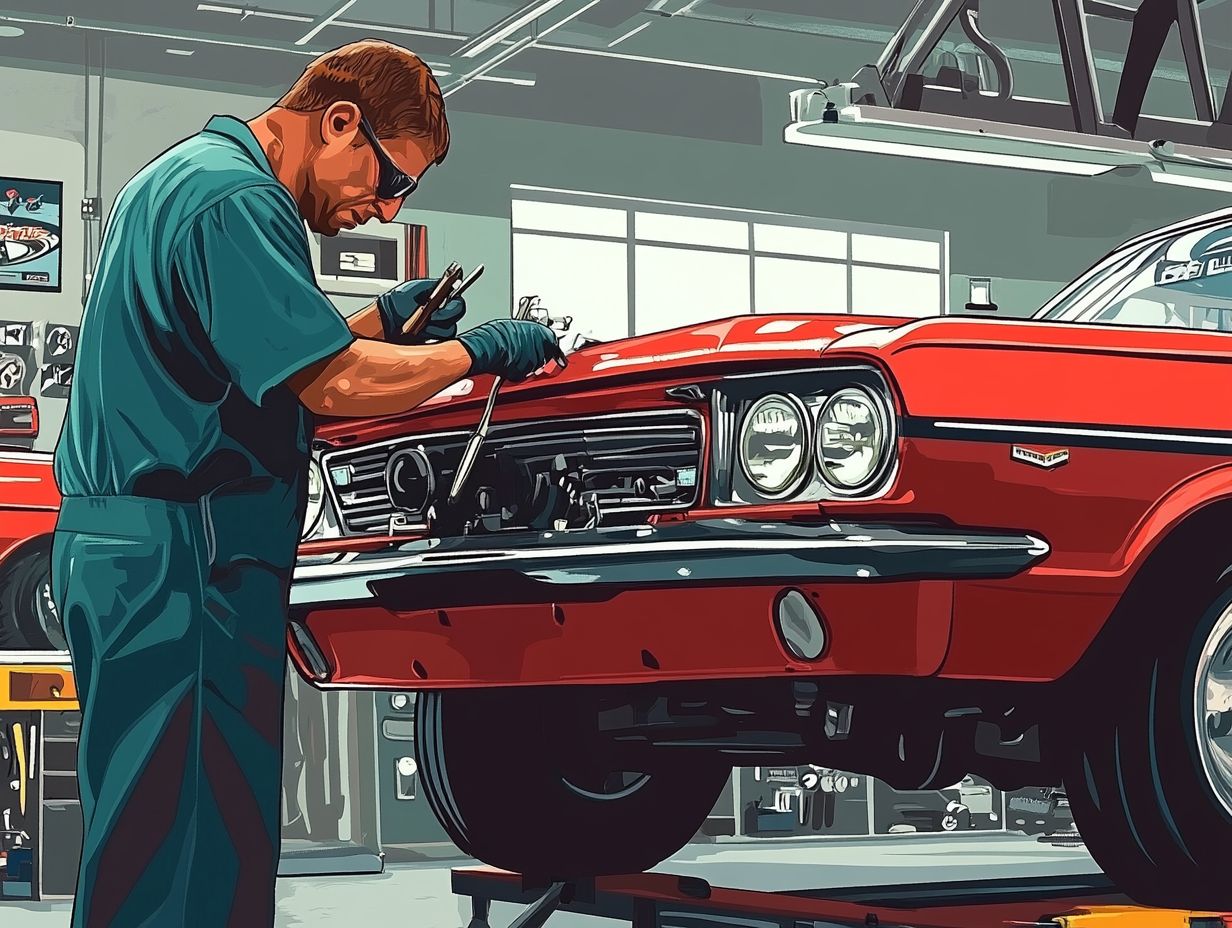
Common car problems diagnosable without a mechanic include low tire pressure, a dead battery, and a loose gas cap. These issues can often be resolved by checking and adjusting the components yourself.
3. Can I use my smartphone to diagnose common car problems?
Yes! There are several apps available that allow you to use your smartphone as a diagnostic tool for common car problems. These apps can read and interpret DTCs, monitor engine parameters, and provide troubleshooting tips and recommendations.
4. How can I tell if my car’s battery is the source of a problem?
If your car is having trouble starting or if electrical components are malfunctioning, it might indicate a faulty battery. You can use a multimeter to test the battery’s voltage and check for corrosion on the terminals. If the voltage is low or you see corrosion, it may be time to replace the battery.
5. What are some common symptoms of a faulty alternator?
A faulty alternator can cause various symptoms, including dim headlights, a dead battery, strange noises from the engine, and a warning light on the dashboard. If you notice any of these issues, it is important to have your alternator checked and potentially replaced by a professional.
Don’t miss out on these essential tips! Check your vehicle today or consult a mechanic for any concerns to keep your car in great shape.
6. Can I diagnose a problem with my car’s air conditioning system on my own?
You can take charge of your car’s air conditioning! In some cases, it’s possible to spot and fix problems without a mechanic.
Start by checking the refrigerant levels or cleaning the air filter. You can also look for common issues like a broken compressor or a clogged condenser.
If the problem seems complicated, it’s best to get help from a mechanic.

